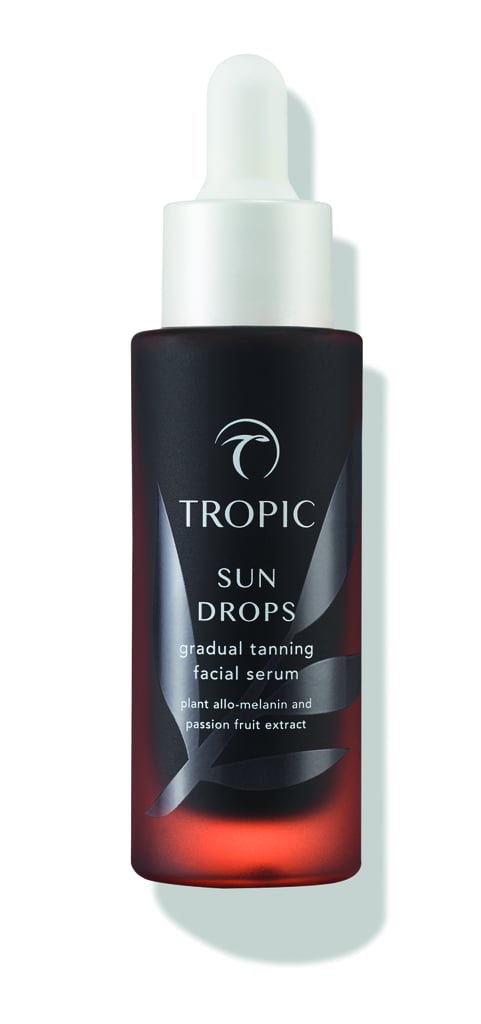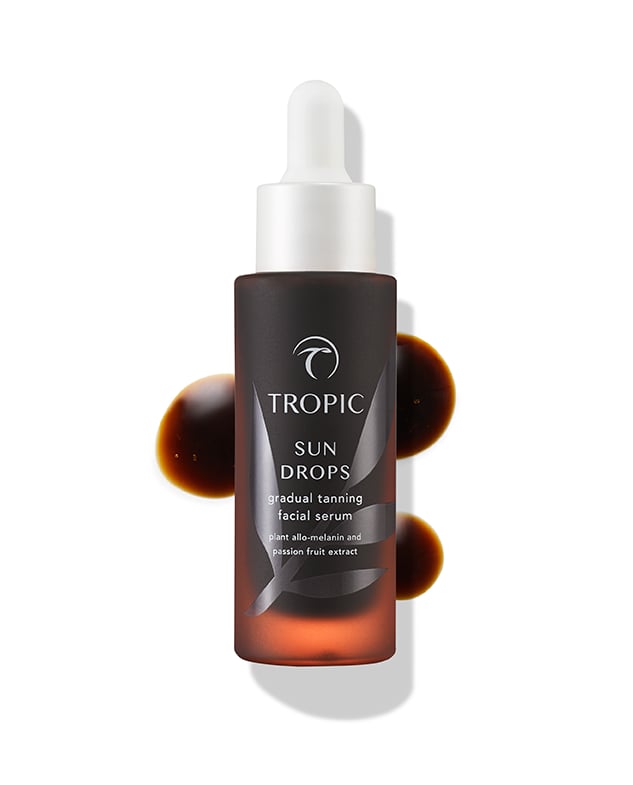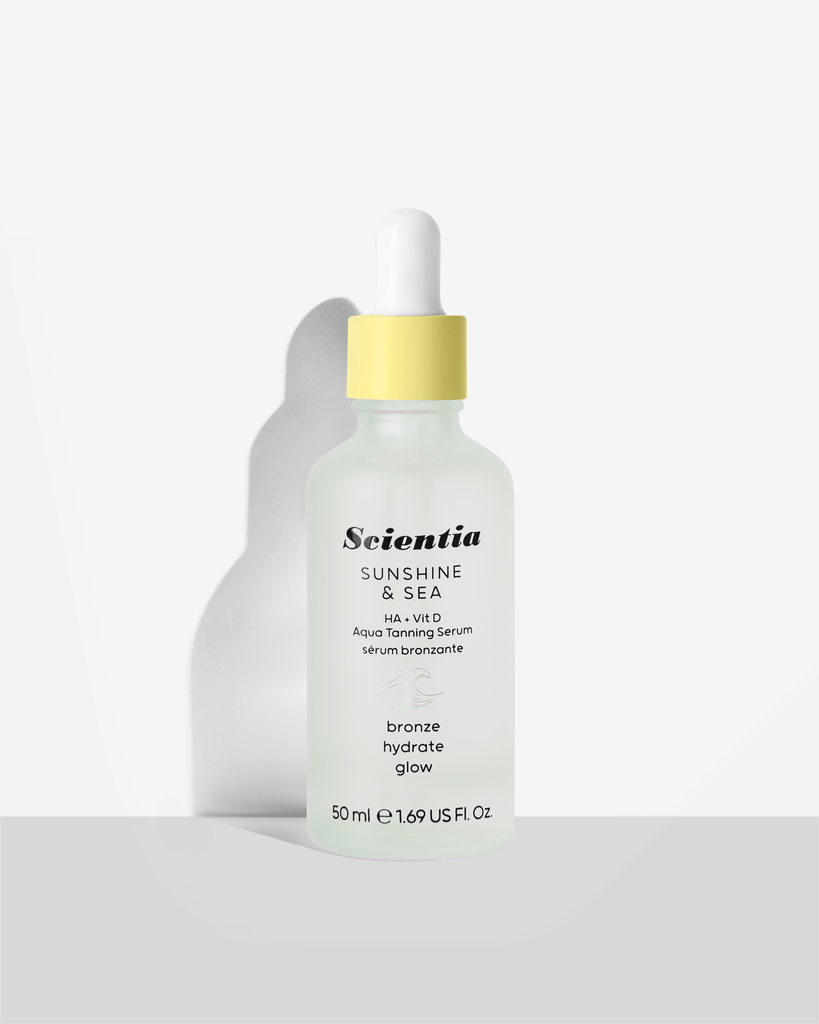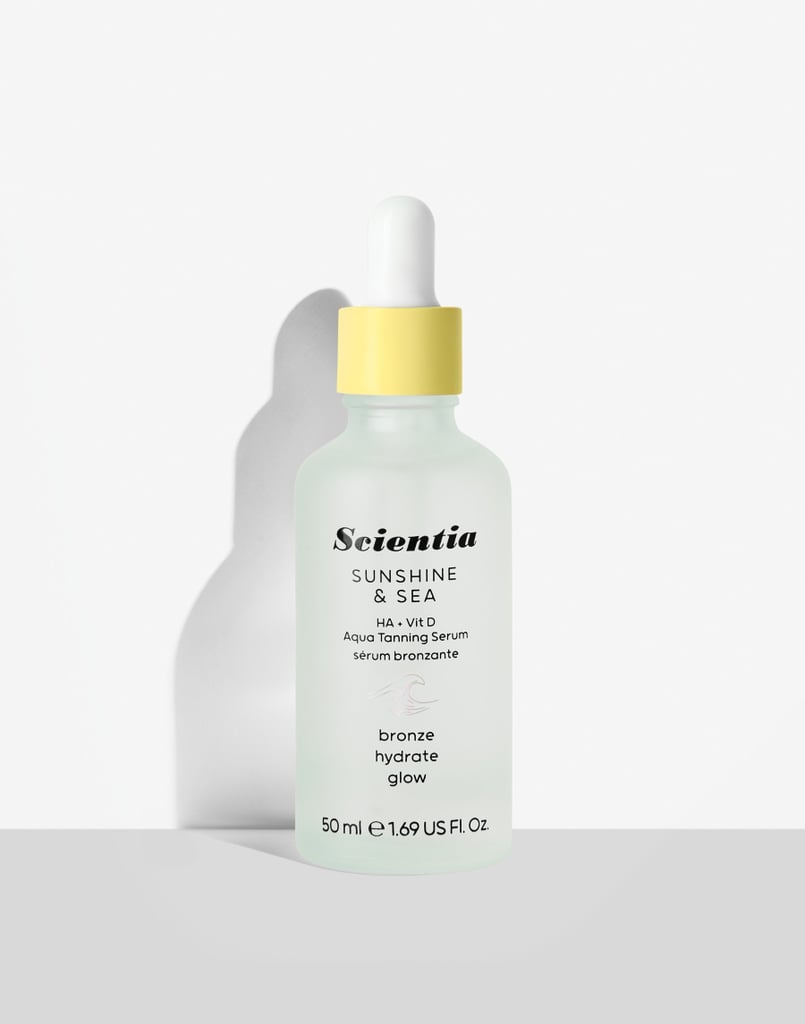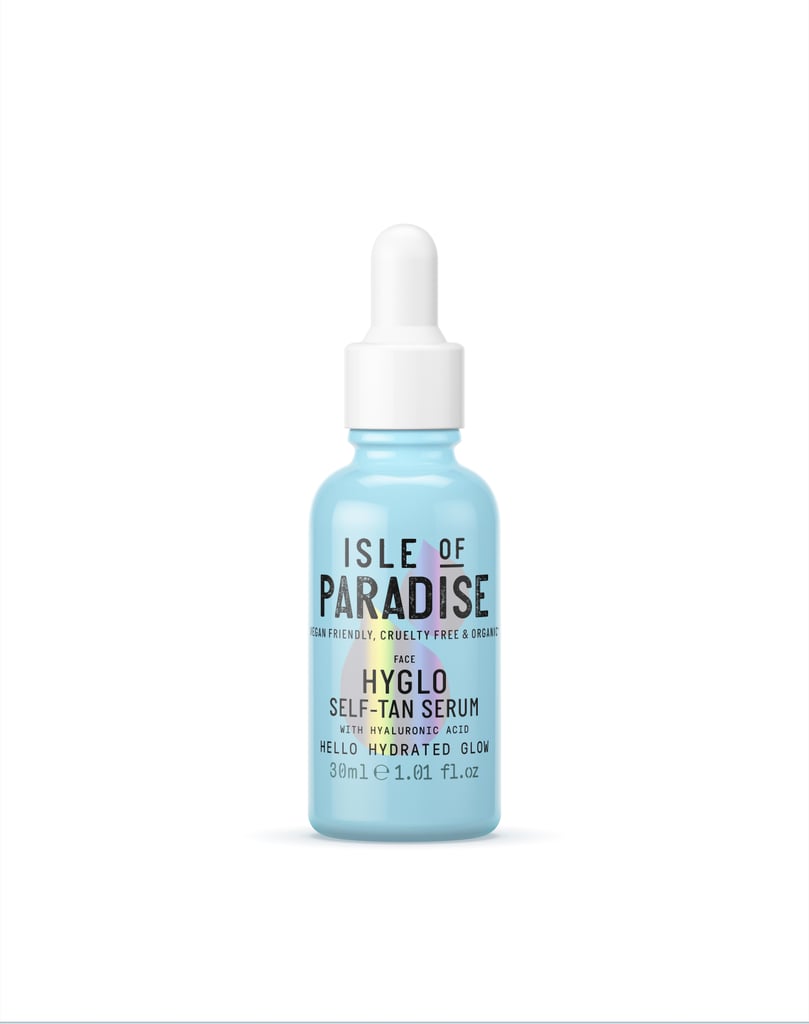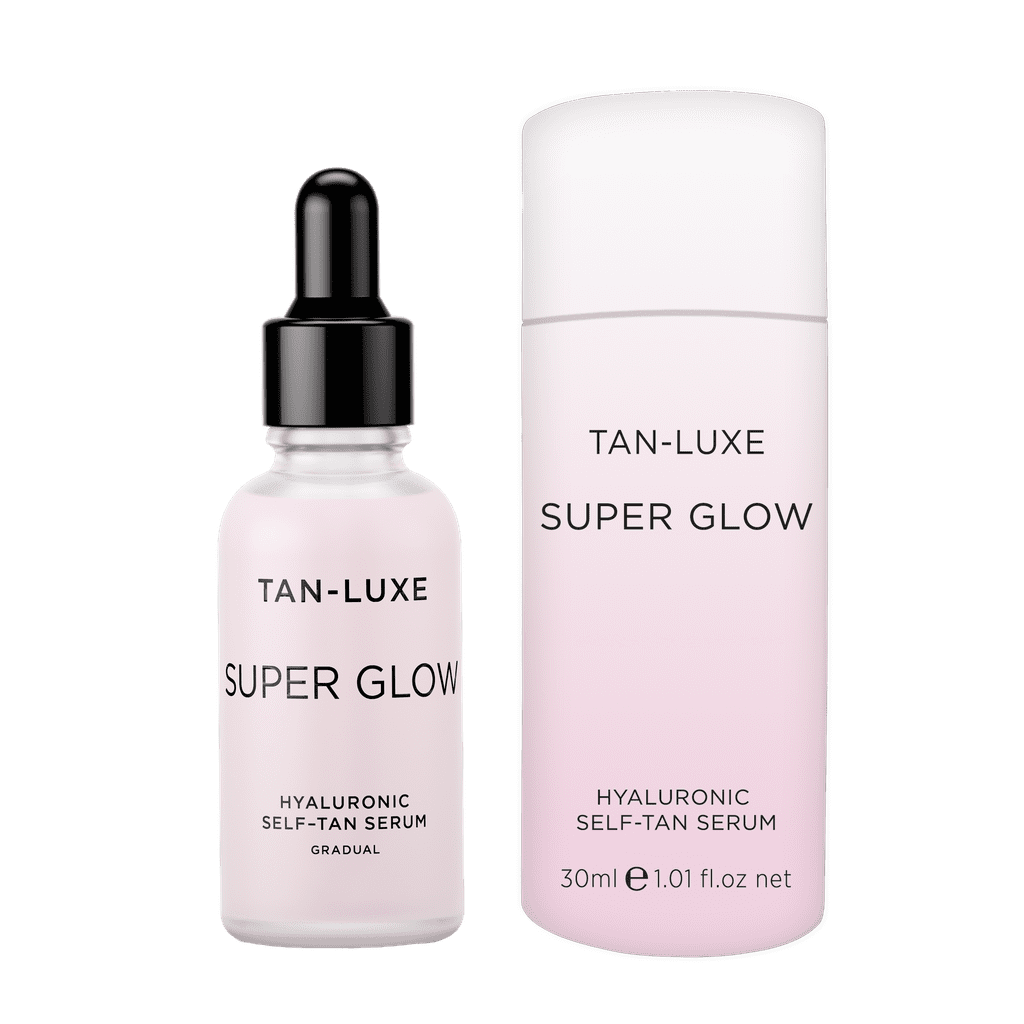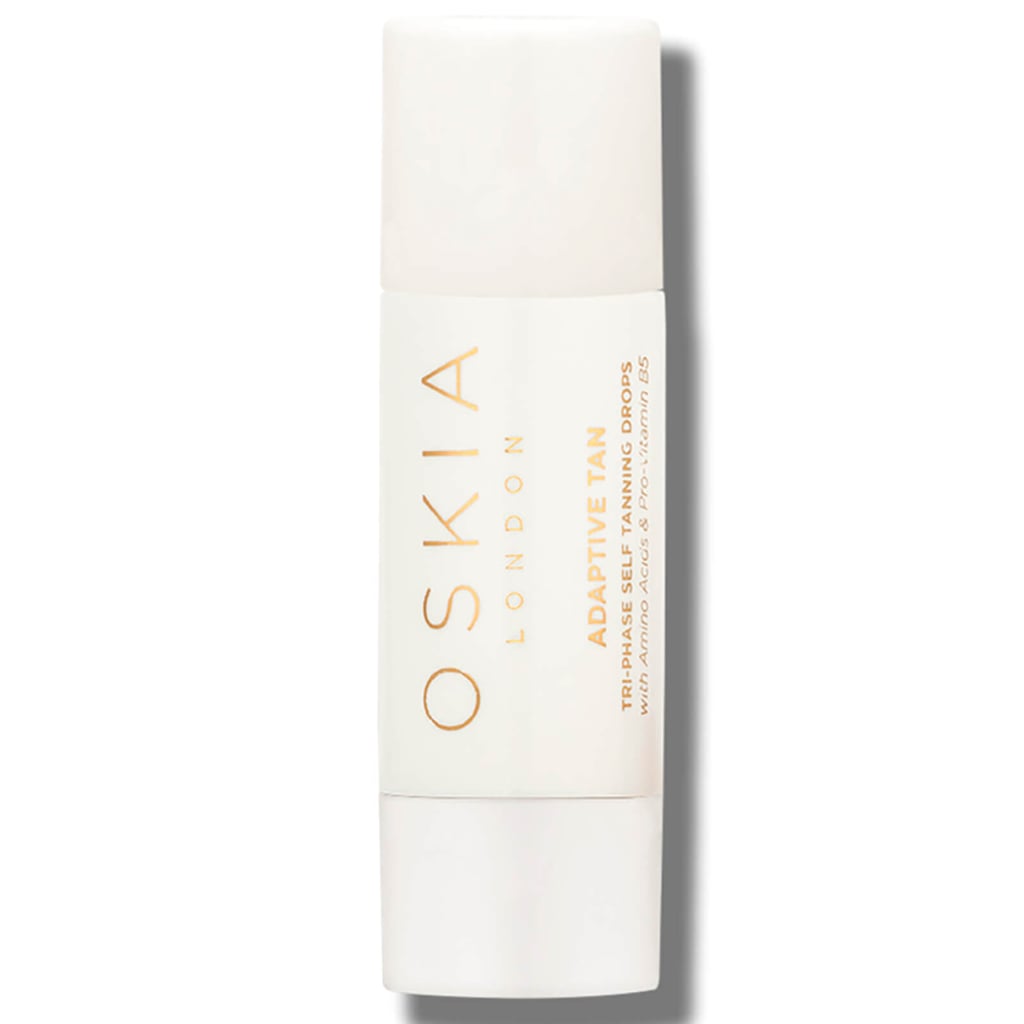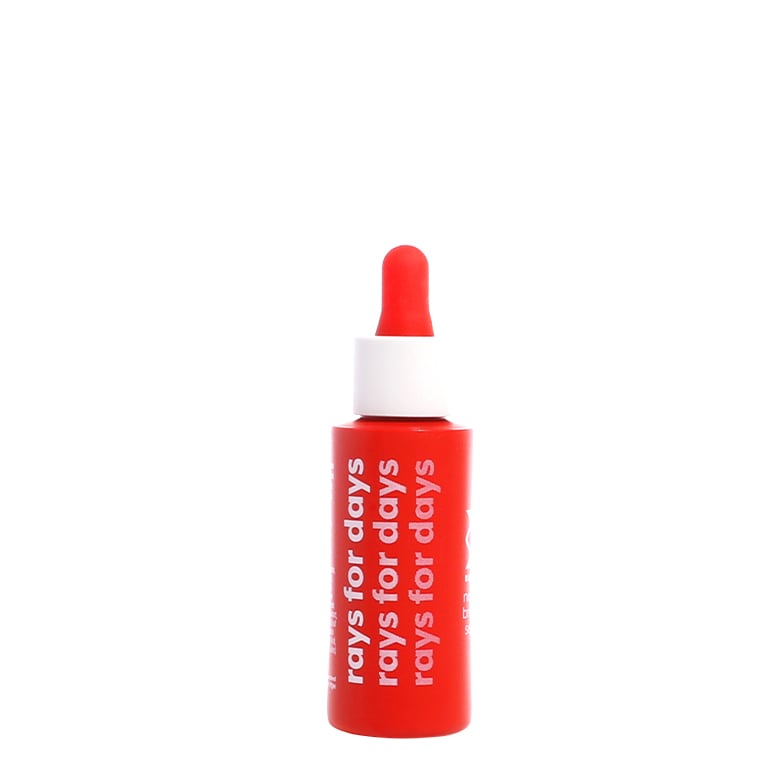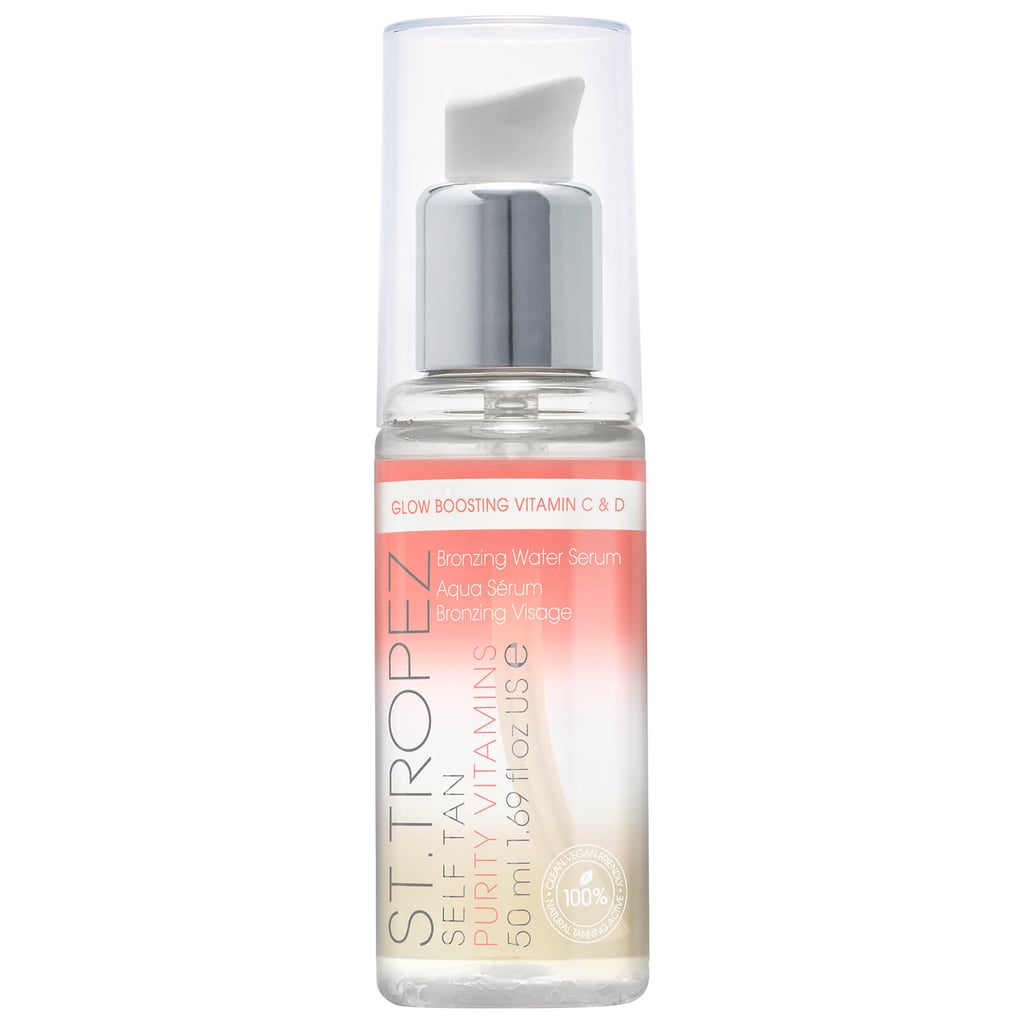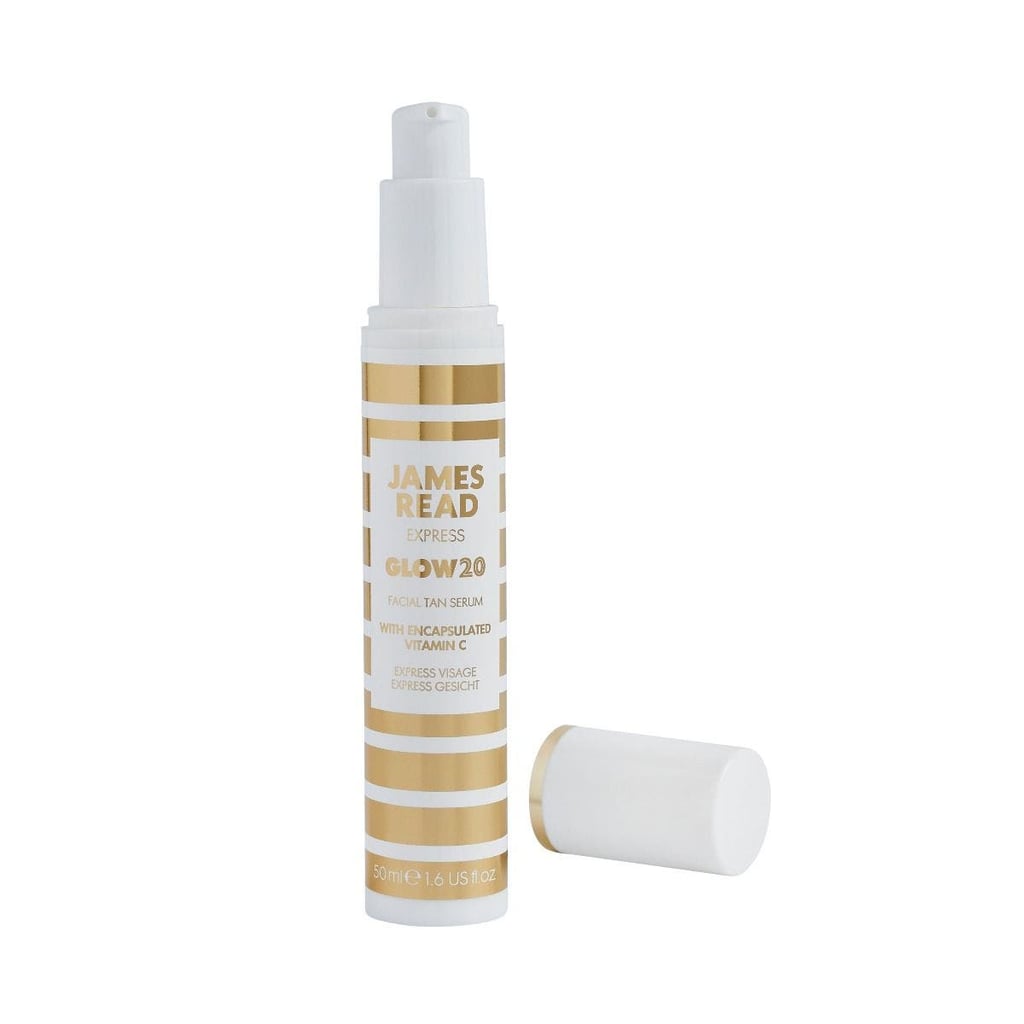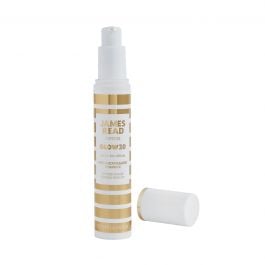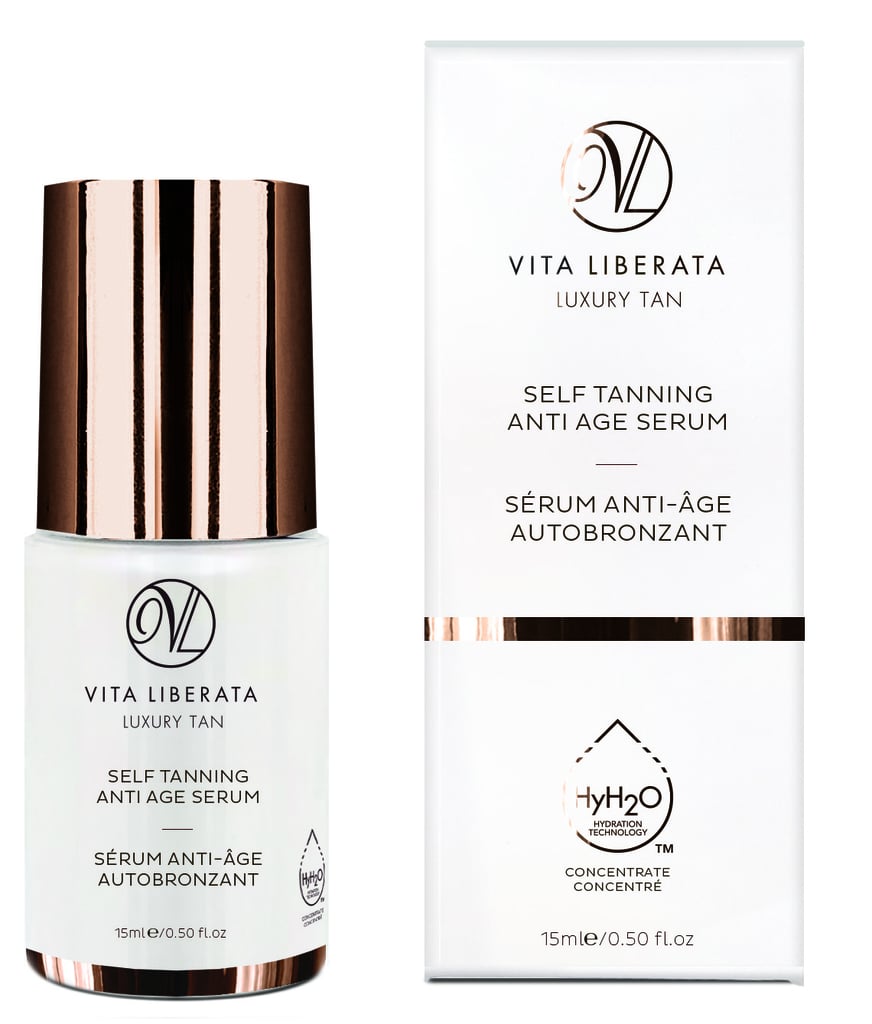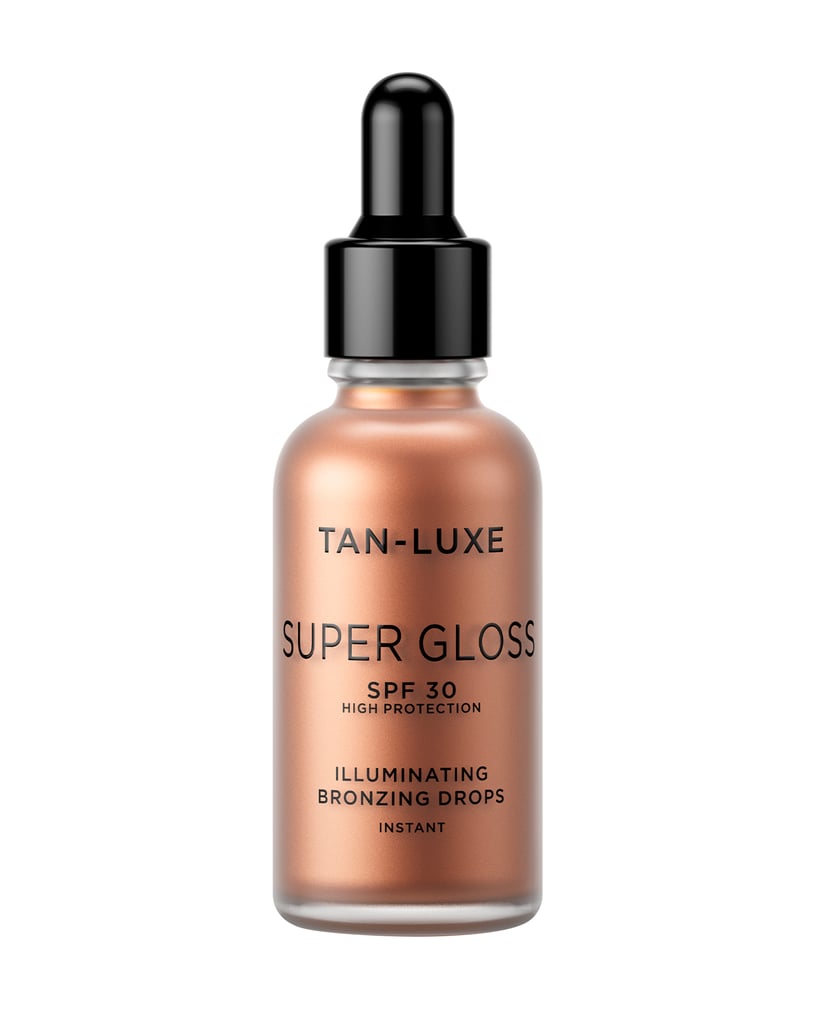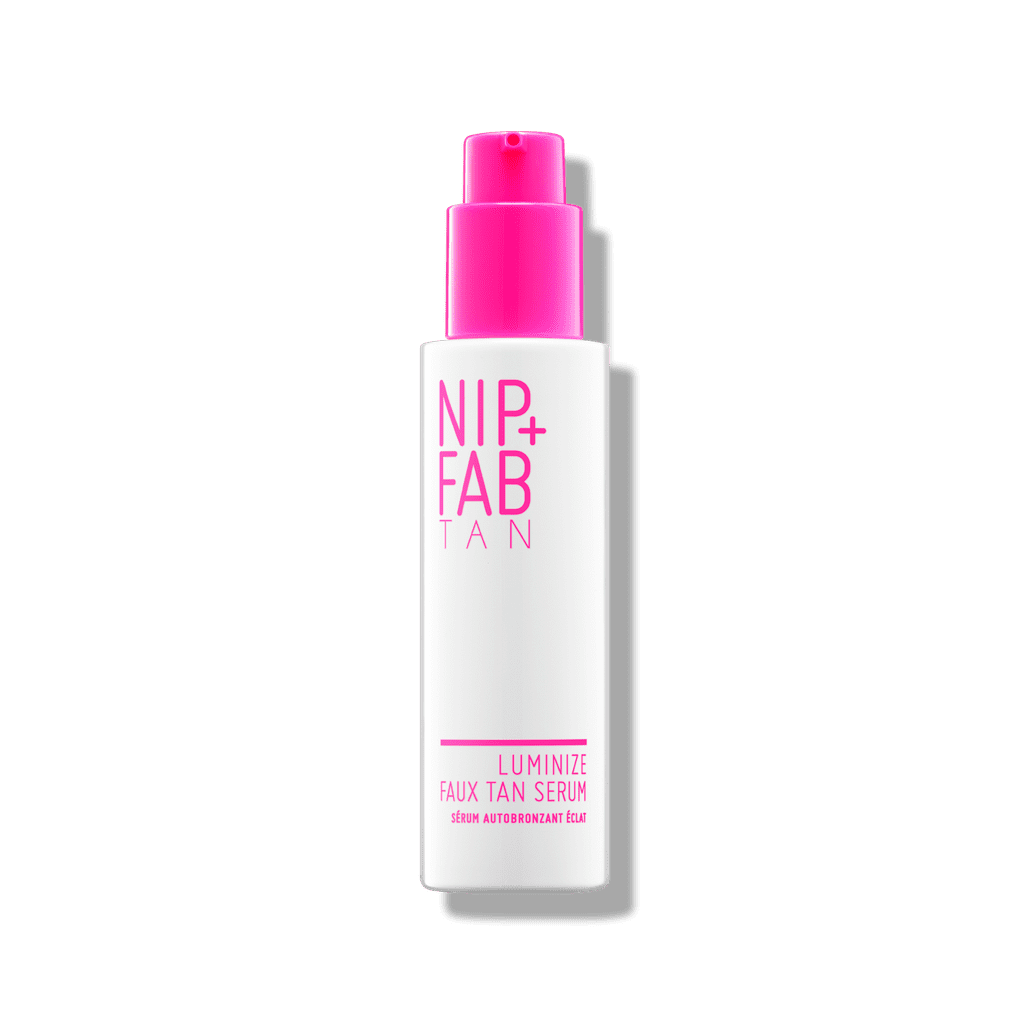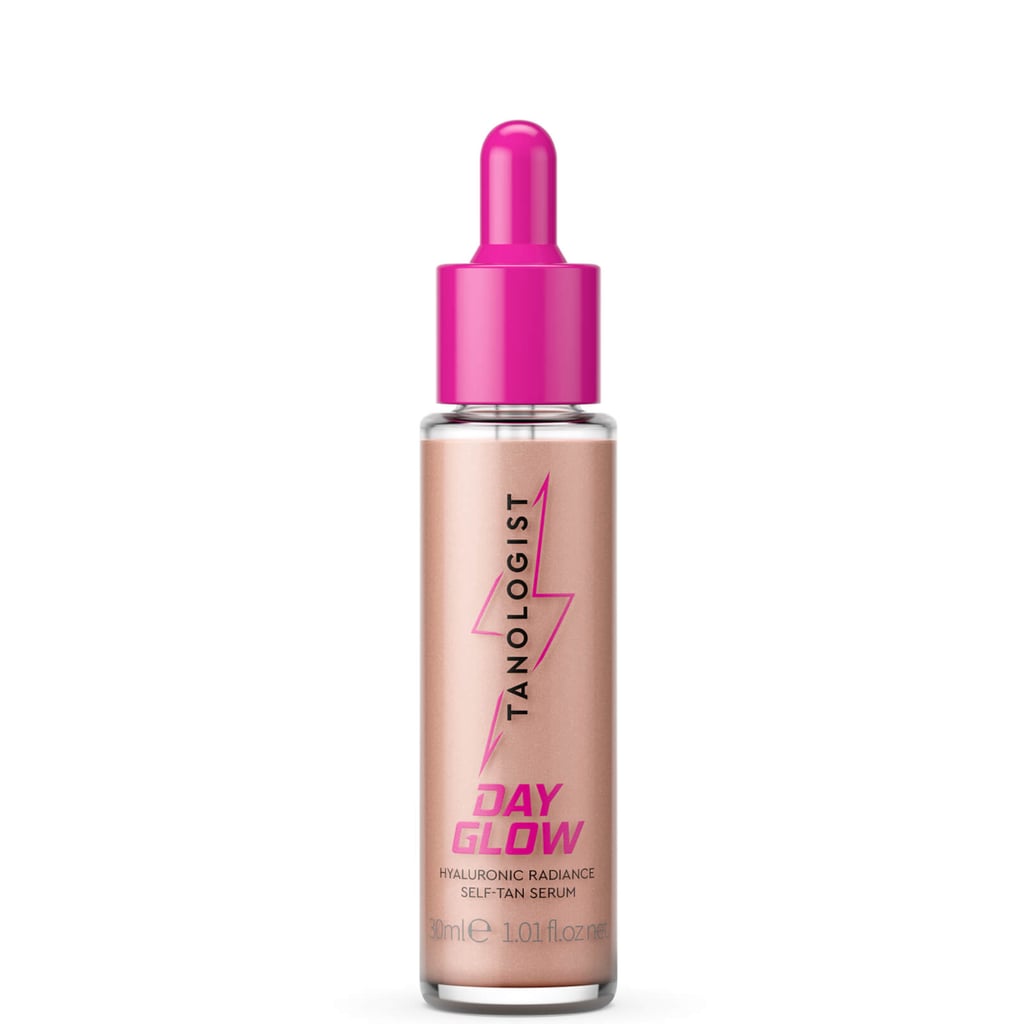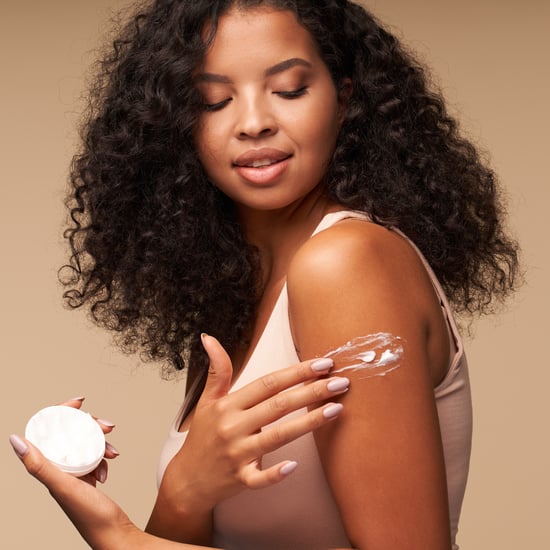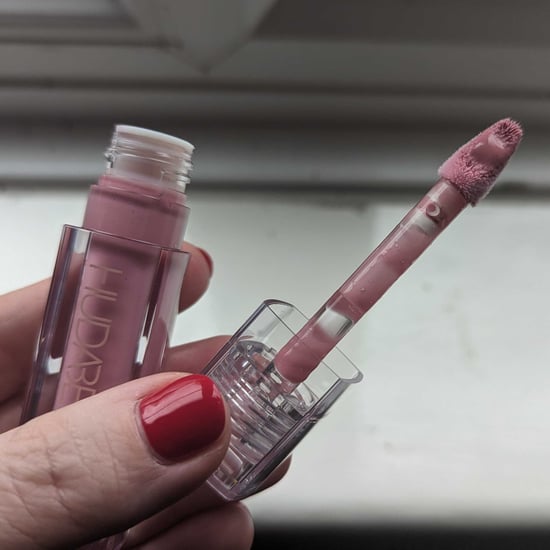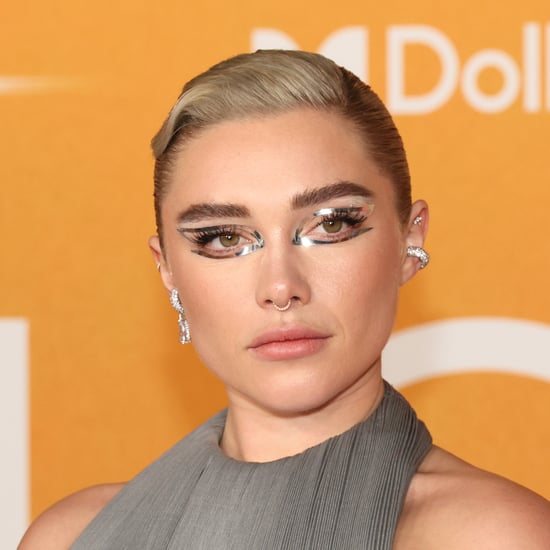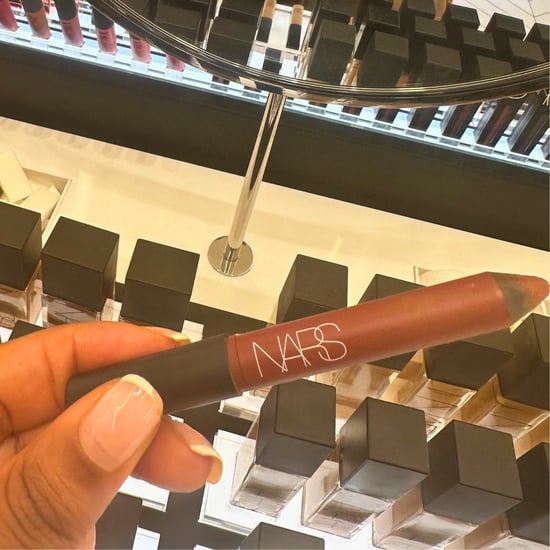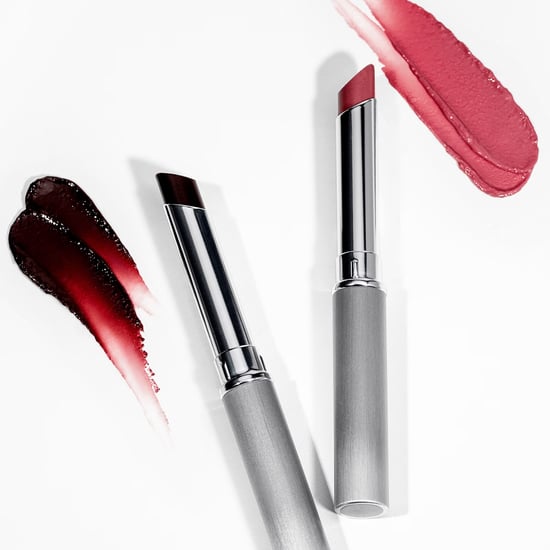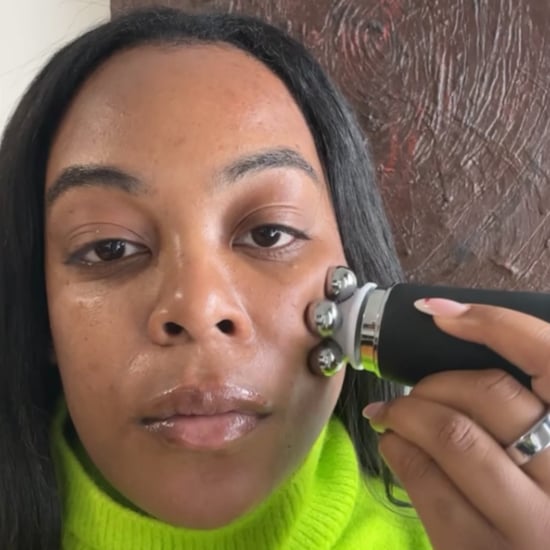The Best Fake-Tan Serums That Don't Cause Spots 2021
Fake Tan Serums Are the Best Way to Self-Tan Your Face Without Clogging Pores

As POPSUGAR editors, we independently select and write about stuff we love and think you'll like too. If you buy a product we have recommended, we may receive affiliate commission, which in turn supports our work.
These days, fake tan comes in a variety of different forms — mousse, lotion, gel, spray, oil you name it. Well, now there's a new type of self-tanner on the market to acquaint yourself with: fake tan serums, a new crop of hybrid skin care/self-tan formulas that are quickly turning the tanning world on its head. These hue-boosting serums feature skin-care's most potent ingredients — actives like hyaluronic acid, niacinamide, and peptides — as well as the self-tanning agent dihydroxyacetone, a combination that results in a more natural-looking tan without a breakout or clogged pore in sight.
Fake-tan formulas have come a long way from the stinky, moisture-sucking formulas of old. We now have newer, more advanced formulas that promise fewer streaks, very little smell, and the perfect postholiday glow. Yet, some of these formulas can still have some negative effects on your skin, especially when it comes to self-tanning your face — with some consumers experiencing issues like blocked pores, spots, sensitivity, and dryness.
"There is no doubt that for some people, incorporating a facial self-tan into a skin-care routine can be troublesome, which is why it's so important to find a formulation that works for your own individual skin type," says Dr Emma Wedgeworth, dermatologist at London's Dr Sam Bunting Clinic. "I find that self-tan can dry sensitive skins out, whilst oily skins may be more prone to breakouts. As with all skin-care products, the formulation of the product is key, so for sensitive skin, a well-formulated self-tan serum may be a game changer. Some may even be light enough to add to your existing moisturisers, which means you know that the base of the product already works well with your skin," she added.
I was first introduced to a self-tan serum after trying Tan-Luxe's sell-out Glow Hyaluronic formula last year. Full disclaimer: I've never been a massive fan of fake tan. I hated the smell, and most products I tried clogged my pores for days after. This one, however, was different. Utilising hyaluronic acid — the moisture magnet known for its hydrating properties — Tan-Luxe's serum was a game changer for me. It left my skin hydrated and with a subtle bronze colour that made my complexion look healthy and glowy.
"The ethos behind all Tan-Luxe products is that they start life out as skin-care products; all that hyaluronic, superfood goodness is our base formulation," Mark Elrick, founder of Tan-Luxe, tells POPSUGAR. "We then work backwards from this to incorporate the tanning actives once we have a better idea of the benefits we want this product to deliver to the user." In terms of the Glow Serum, for example, Elrick knew he wanted a serum that could stand on its own as a great hydrator — the fake tan was an added bonus. "Serums are a texture we're already familiar with in the world of skin care, so application is intuitively simple [for people] — it's just a case of applying product directly to skin as you would normally."
So, how exactly does a self-tan serum formula compare to the more traditional self-tan? "Self-tans were often available as lotions or creams, which are a stable mixture of oils and water called an emulsion," explains cosmetic chemist, Steven Alain Ko. "These newer serums are much simpler formulations," a fact that results in lighter textures, better ingredients, and a product that can slot seamlessly into your existing skin-care routine. "Regardless of whether it's cream or serum, all of the formulas use the self-tanning agent dihydroxyacetone (DHA), which is a carbohydrate that reacts with components in our skin to create the tan colour," says Ko, adding that the majority of self-tan serums available right now all have similar bases, including "the tanning agent (dihydroxyacetone, and in some cases erythrulose), a humectant (propanediol or glycerin), and a film former (hydroxyethyl cellulose or xanthan gum)."
What really sets self-tan serums apart from traditional facial self-tan formulas, however, is that they're packed with powerful active ingredients, designed to penetrate faster into the skin. Dr Wedgeworth, who advocates using self-tan to avoid harmful UV exposure, says: "my favourite ingredients to include in self-tan formulations are glycerin and shea butter to ensure hydration of the skin." The ingredients in self-tan serum formulas work in tandem with your skin and routine, offering a host of skin-care benefits from hydration, smoothing, plumping, brightening, and even minimising oil production. Keep reading for some of the best formulas to try right now.
Tropic Sun Drops Gradual Tanning Facial Serum
In addition to DHA (derived from beet root), the Tropic Sun Drops Gradual Tanning Facial Serum (£22) also contains something called plant allo-melanin, which is a particularly clever ingredient that mimics the colour of your own melanin (the pigment that determines skin and hair colour) to create a more subtle, natural-looking tan. It also contains antioxidant-rich passion fruit extract, to brighten up dull skin, and coconut water, which has electrolytes and amino acids to instantly hydrate. The result? A gentle, highly nourishing facial serum that creates a subtle golden tan. "Finally a facial tanner that does't cause spots or irritate my sensitive skin!" one reviewer on the site said of the formula.
Scientia Sunshine & Sea Aqua Tanning Serum
Scientia Sunshine & Sea Aqua Tanning Serum (£21) is pure holiday happiness in a bottle. Not only does it give you that post-holiday glow, but it also smells of total coconut heaven. It's slightly more watery in texture than other tan serums, which means it glides onto the skin super easily, and makes a little go a long way. The formula contains hyaluronic acid, shittake extract, prickly pear seed oil, and birch bark extract to give your skin a boost of hydration and antioxidant goodness while you tan. As the name suggests, it truly has the magic of sunshine and the sea in a bottle.
Isle of Paradise Hyglo Self-Tan Serum
What sets Isle of Paradise Hyglo Self-Tan Serum (£22) is the fact it's vegan and cruelty-free, formulated with a vegan hyaluronic acid molecule to help your skin retain moisture and keep it looking plump. Developed by celebrity tanning expert Jules Von Hep, this gradual self-tan serum is also incredibly hydrating, because in addition to HA, it also contains avocado, coconut, and chia seed oils that will leave your skin glowing and help your faux glow last and last. But don't let the whole super moisturising thing worry you; the Hyglo Serum is very lightweight and supremely gentle on sensitive skin types.
Bondi Sands Pure Self Tanning Drops
If you're after a tanning serum that can work for both your body and your face, let us introduce to you the Bondi Sands Pure Self Tanning Drops (£15). Designed specifically for sensitive skin, the formula is fragrance-, sulphate-, and dye-free so that everyone can enjoy the joys of a faux glow. Simply add a couple of drop to your moisturiser where you'd like a tan and leave it to work for 6-8 hours. Remember, the more drops you add and the longer you let your tan develop, the darker it'll be.
Tan-Luxe Super Glow Hyaluronic Self-Tan Serum
With a patented 'Transparent Tanning' technology, the Tan-Luxe Super Glow Hyaluronic Self-Tan Serum (£35) delivers an instant glow, but without clogging your pores. With two different-size hyaluronic acid molecules and seven different superfoods, the powerhouse of ingredients increase skin function, boost hydration, protect against free radical damage, and even help smooth fine lines. And after the sellout success of the facial serum, the brand has also just launched a Super Glow Body Hyaluronic Self-Tan Serum (£35).
Oskia Adaptive Tan Drops
Oskia Adaptive Tan Drops (£70) is your answer to high-end at-home tanning. They're incredibly natural-looking, adapting to your individual skin tone thanks to its naturally-encapsulated DHA. The nozzle applicator makes it incredibly easy to drop into your moisturiser and apply before bed without any mess. The best part about these drops is that they last significantly longer than a lot of other serums; about 7 days if you moisturise well.
Beached Rays For Days Natural Bronzer Serum
Thought up by Australian beauty brand Beached, this bronzing serum is packed with ingredients found on the continent, including kakadu plum, a popular fruit extract that is incredibly high in vitamin C, as well as lesser-known illawarra and burdekin plums, which help shield against free radicals to help protect the skin from unnecessary damage. In addition to DHA, the Beached Rays For Days Natural Bronzer Serum (£21) also contains light-reflecting particles that impart an immediate glow, which means you can use it as a serum, mix it in with your moisturiser, or use it as a highlighter on the high points of your face to catch the light.
St Tropez Purity Vitamins Bronzing Water Face Serum
Infused with vitamins C and D, the St Tropez Purity Vitamins Bronzing Water Face Serum (£22) doesn't just brighten up your skin (thanks to vitamin C), it promises to mimic the effects of sunshine thanks to a high-tech proprietary technology the brand calls the "Sunshine Complex". Vitamin D is good for healthy bones, but while we create more vitamin D from direct sunlight, as we all know, the UV exposure is extremely harmful to our skin. This technology claims to help the skin stimulate vitamin D production without any sun exposure, alongside a host of ingredients like kakadu plum, peach flower extract, and avocado oil, which all work together to give your face a natural-looking, sun-kissed glow.
James Read Glow20 Facial Tanning Serum
James Read Glow20 Facial Tanning Serum (£25) is the ultimate hard-working self-tanning serum as it develops in as little as just 20 minutes both thanks to the DHA (the sugar that reacts with proteins on your skin's surface to causes it to turn bronze) and ingredients like vitamin C, hyaluronic acid, and aloe vera in the formula — the latter of which help keep your skin hydrated and bright. The best part, though? This serum is meant to fit in with the rest of your skin-care routine, not add an extra step, as you can apply between your cleanser and moisturiser.
Vita Liberata Self Tanning Anti-Age Serum
The Vita Liberata Self Tanning Anti-Age Serum (£29) is charged with matrixyl 3000 — a peptide that helps to stimulate collagen production — as well as cucumber and rose to give you glowing skin. The benefits? It plumps the skin, reduces the appearance of fine lines, and combines an innovative technology to help balance oil production to keep your pores from getting clogged. Use it as a primer before makeup, or add a few drops to your existing moisturiser for instant radiance and a boost of natural-looking bronze colour.
Tan-Luxe Super Gloss SPF 30
Tan-Luxe Super Gloss SPF 30 (£35) is a hybrid between a tanning serum and bronzer. It can be added to your moisturiser as an all over bronze finish, or used to highlight certain areas. The formula contains hyaluronic acid and squalane to hydrate your skin whilst you tan. But remember, despite the serum containing SPF 30, you still need to wear a separate sunscreen to be protected.
Nip + Fab Luminize Faux Tan Serum
A brand known for its innovative vegan tanning formulas, Nip + Fab's newest innovation combines its latest fake tan technology with your favourite skin-care ingredients, like hyaluronic acid (the molecule known for its hydrating properties that can hold up to 1,000 times its weight in water) and niacinamide, which works by smoothing and evening skin tone. The Nip + Fab Luminize Faux Tan Serum (£29) aims to deliver instant results, combining some of the benefits of your most-loved skin care.
Tanologist Day Glow
Tanologist Day Glow (£13) is a two-in-one as it gives you a gradual tan whilst also delivering an instant golden, dewy glow. It's also packed with hyaluronic acid, juniper, and pink grapefruit to hydrate add some moisture back into your skin. It looks especially great underneath makeup for that ultimate summery glow. Oh, and it's also vegan.

